If you are lucky enough to live in a place where these trees grow, you will already be aware of their
huge size, unusual shapes, and unique beauty.
If you haven't seen one of these trees it would amaze and confuse you. This one is in Devenport,a suburb of Auckland. It is over 150 years old and is around 17M tall with a canopy of over 40M.
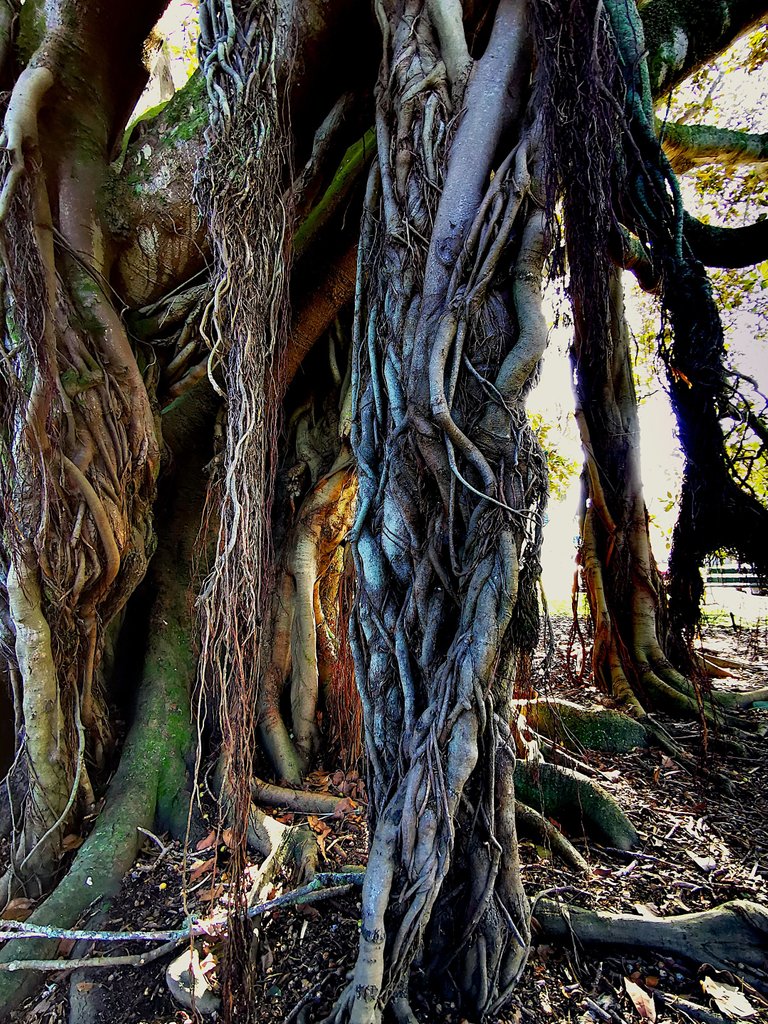
To me these mature Moreton Bay figs are like living sculpture. They have incredibly complex aerial root systems hanging down from the branches in vines like matted hair and melting wax, and huge buttress root systems as well. Walking under and around this majestic tree is confusing and tricky because it doesn't look or act like a normal tree-the roots are on the outside and there are columns or mature aerial root systems spreading out and down from the branches to support the huge canopy.
It is almost as if it is an ancient alien life form!
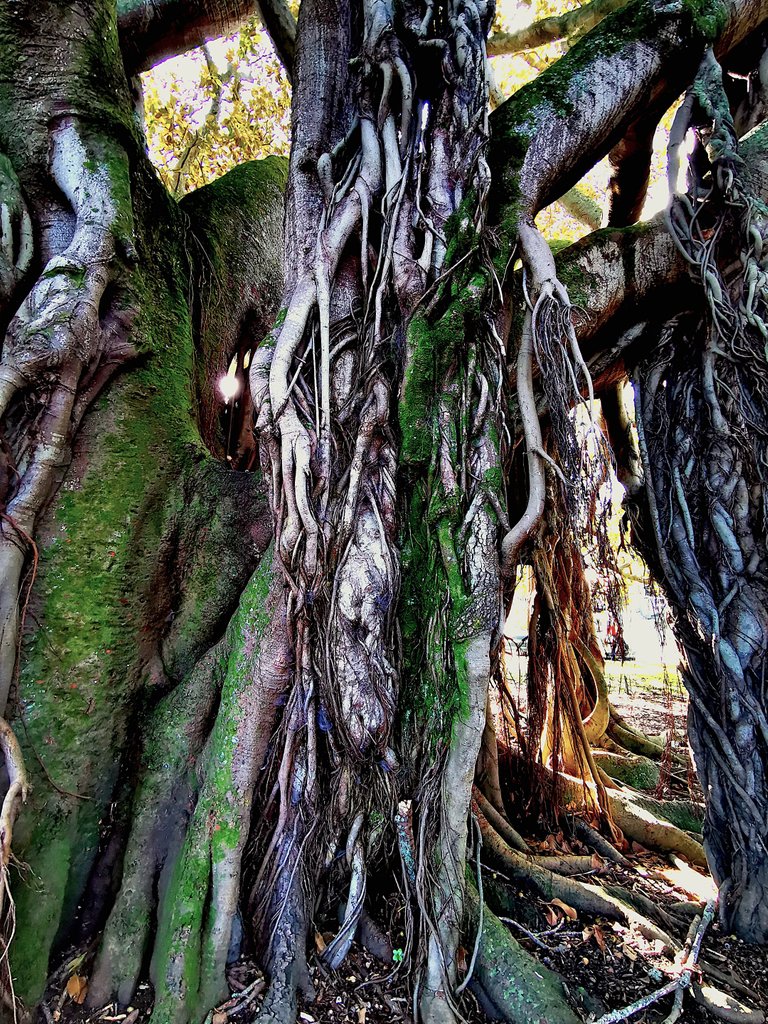
The Moreton Bay fig is an evergreen tree that can reach heights of 60 m (200 ft). The trunk can be massive, with thick, prominent buttressing, and reach a diameter of 3M.The canopy can reach 50M across. They have been recorded as living for over 270 years!
It is a rainforest plant and in this environment more often grows in the form of an epiphytic strangler vine than that of a tree. When its seeds land in the branch of a host tree it sends aerial, "strangler" roots down the host trunk, eventually killing the host and standing alone.
The Moreton Bay fig is native to eastern Australia, although it is widely used as a feature tree in public parks and gardens in warmer climates such as California, Spain, Portugal, Italy, Malta, northern New Zealand (Auckland), and Australia. Old specimens can reach tremendous size, and their aggressive root system renders them unsuitable for all but the largest private gardens.
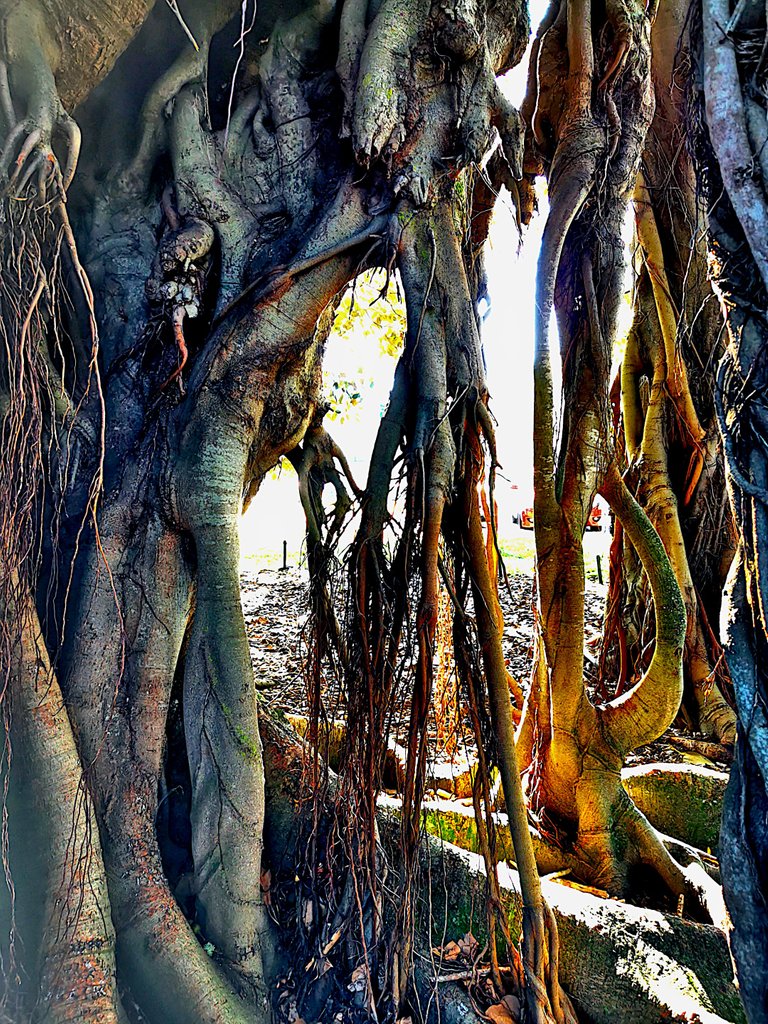
So what you see are the aerial roots over time growing down to the earth and gradually over decades becoming columns to support the spreading crown of the growing tree.It is like a crazy maze to walk under.
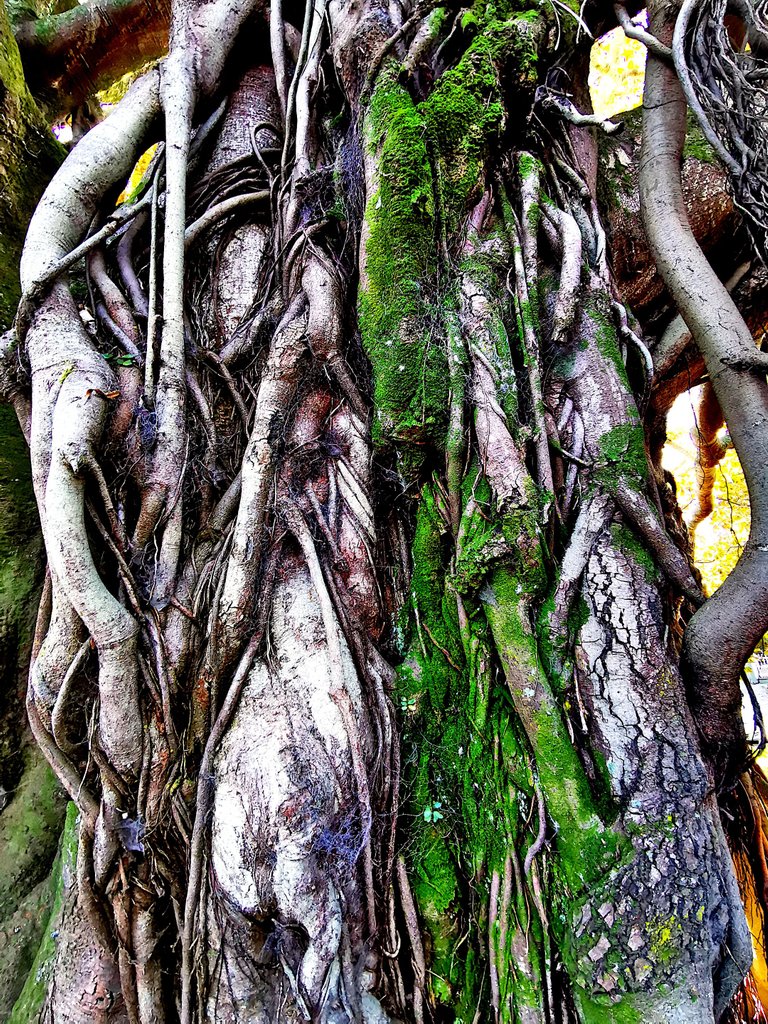
It is called a strangler fig because seed germination usually takes place in the canopy of a host tree, where the seedling lives as an epiphyte until its roots establish contact with the ground, when it enlarges and strangles its host, eventually becoming a freestanding tree by itself.
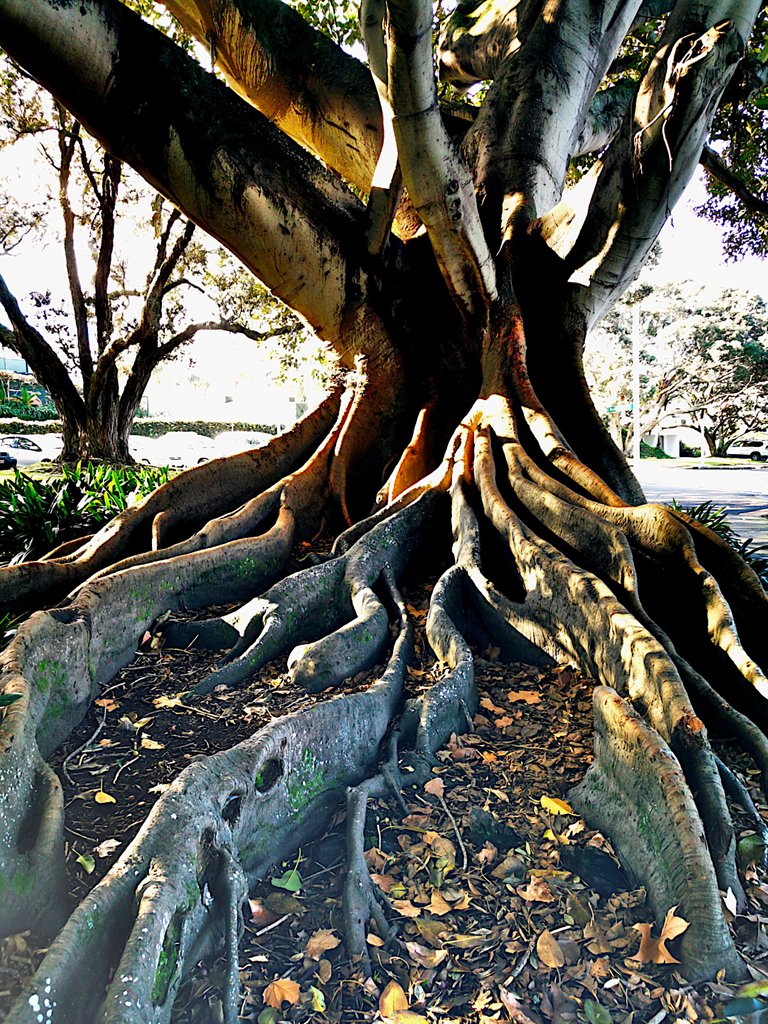
This young tree exhibits the large buttress roots common to the species. They have grown before the aerial roots have started that are needed to support the canopy later on.
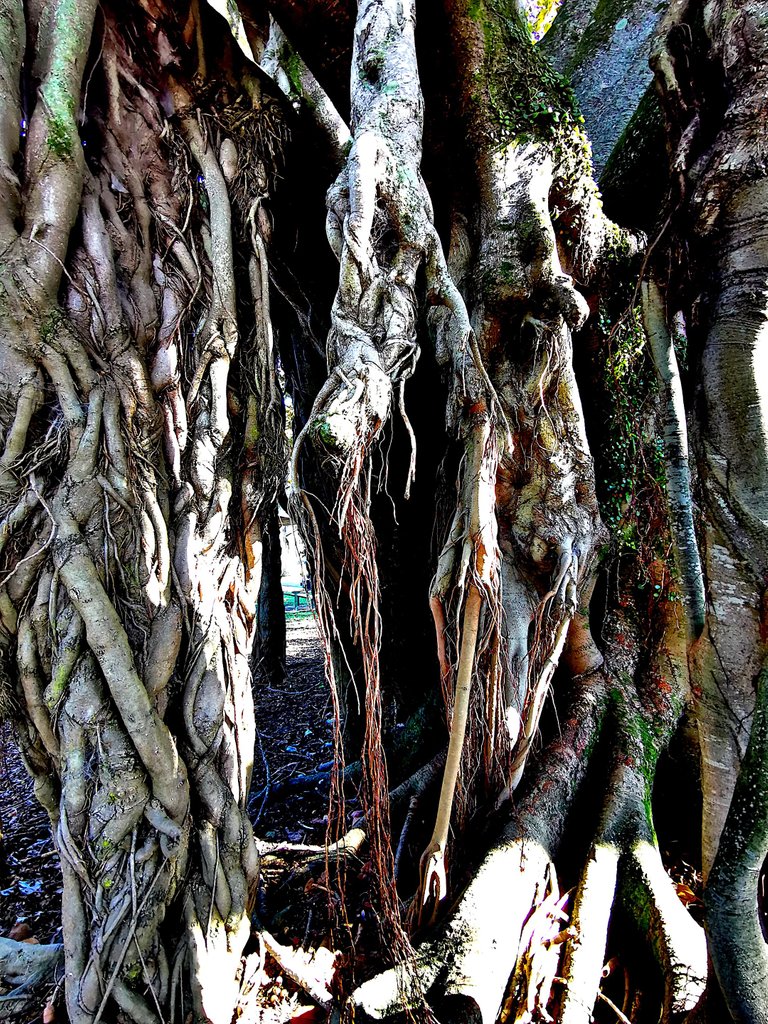
I love to photograph these trees-no matter what side of the tree you shoot it is always different than the others-it has no symmetry at all.
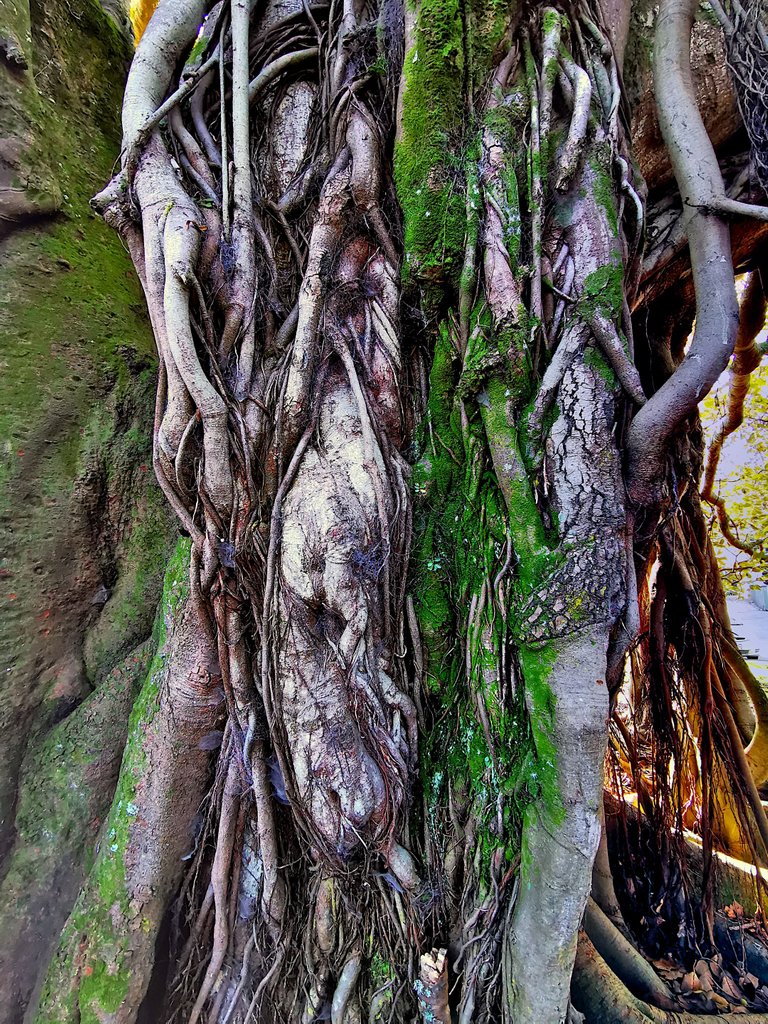
The incredible complexity of the root systems and how long they have needed to grow to this stage is incredible.
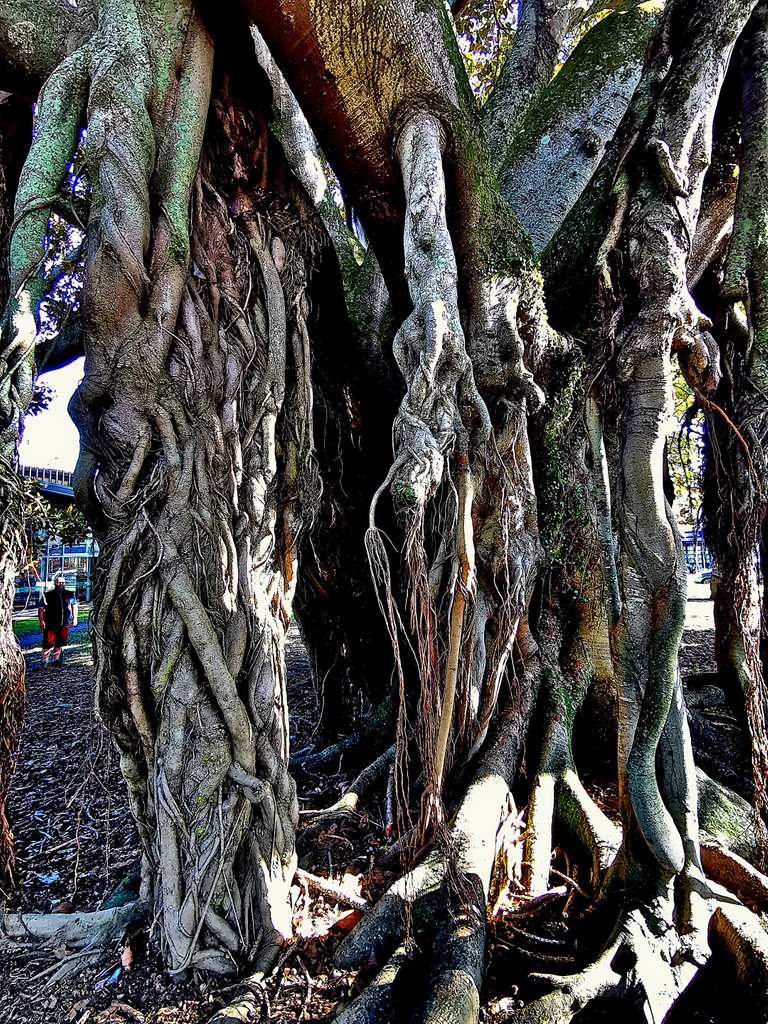
Thanks for viewing this crazy tree!